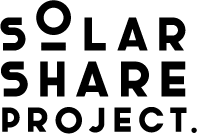Title Page
-
Worksite Location
-
Conducted on
-
Personnel
- Aaron Hall
- Corey Boyd
- Peter Camilleri
- BrendanO'Flynn
-
Prepared By
-
Solar Share Project Job Number
Conversation
Task
-
What tasks are we doing today?
- Solar Panel Installation/Removal
- Battery Installation
Fatal Risks
-
What fatal risks are to be controlled before our work commences:
- Electricity
- Falling from height
- Hazardous substances
- Mobile plant
- Falling object
- Vehicle accident
- Lifting operations
- Breach of worksite
- Open excavations
Hazards
What is different about this about this job from what you usually do? (Site specific conditions).
-
Building:
- Single storey building
- Double storey building
- Tiled roof
- Tin roof
- Roof pitch 0<25 degrees
- Roof pitch 25<40 degrees
- Asbestos containing materials identified (Insulation, eaves, roof sheeting)
-
Weather:
- Sunny
- Wet
- Extreme heat forecast
- Windy conditions
-
Electrical Switchboard:
- Asbestos containing materials identified
- In good condition
- In poor condition
Has anything changed from the design / plan?
-
Are there any changes to the design / plans.
-
How are we going to manage those changes?
What could hurt us or anyone else?
-
What hazards and risks are associated with this job and site?
- Slips, Trips, Falls
- Fall from heights
- Cuts & abrasions
- Live electricity
- Asbestos containing materials
- Dust (inc. concrete grinding)
- Eye hazards
- Manual handling
- Vehicle movements
- Crush hazards (machinery, heavy items, lift movements)
- Environmental - Sun, heat, wind, wet weather
Controls:
-
What controls will we put in place to protect us and others?
- Slips, Trips, Falls = Maintain a clean work area, remove trip hazards. Do not work in wet areas. Ensure any open penetrations have an exclusion zone established around them.
- Fall from heights = Use correct fall prevention device and work positioning systems. Ensure equipment is rated and in good working condition. Temporary anchor points and rope setups to be installed by a competent person. Access ladders to be setup on a 4:1 ration and to be suitably fixed at the top and bottom of the ladder.
- Live electricity = No live work is to be undertaken. Circuits to be worked on are to be identified, de-energised, isolated (locked-out and tagged-out), and proven de-energised with the correct testing tool by a electrically qualified person.
- Cuts & Abrasions = Gloves are to be worn when working with sharp items, tools (grinders), and when moving broken materials (tiles).
- Asbestos containing materials = Friable asbestos is not to be disturbed under any circumstance. Non-friable asbestos (i.e switchboard, HRC fuses) are not to be disturbed without the appropriate asbestos management equipment and PPE (P2 mask, full body covering including boots, HEPA filter vacuum). Asbestos Minimum 3m exclusion zone to be established around asbestos work area.
- Dust = Appropriate PPE shall be worn when undertaking works that result in creating dust. Tile grinding requires a P2 mask, gloves and safety glasses to be worn. Where possible, use wet-method cutting for concrete items. Work underneath a house or within a roof space requires a P2 mask and gloves to be worn.
- Eye Hazards = Safety glasses shall be worn when there is a chance of a foreign object hitting eyes (i.e grinding, cutting, bending conduit)
- Manual Handling = Use correct lifting techniques and methods (SPLAT, 2 person lift). Use engineering controls such as panel lifter.
- Crush Hazards = Awareness, Gloves to be worn, communicate with lift operator.
- Vehicle movements - Awareness of other vehicles or mobile plant. Use traffic management / barriers if required
- Environmental - Awareness of work environment, keep hydrated, ensure items on roof a secured and no risk of wind blowing items off. Work to stop in wet weather and can only proceed once roof is dry.
- Falling objects = Establish a drop zone and exclusion zone to prevent injury from dropped items.
-
How are we going to monitor ourselves and our surroundings to make sure that we stay safe?
- Changes to environment: If weather changes (increase of wind, wet weather, extreme heat), stop work and re-assess
- Changes to work team or job scope: Stop work and re-assess
Emergency Plan:
-
What is our plan during a general workplace emergency (fire, building structural failure, injured worker)?
- Immediately stop work and evacuate to front of site. Ensure all staff are accounted for. Call 000 as required and notify supervisor.
-
Has a site specific "fall from heights" rescue plan been provided with the job package?
-
Outline the fall from heights rescue plan below for the site:
Select SWMS that are to be implemented for the job
-
SWMS. Solar installation
-
Any applicable tasks?
HAC Sign On
-
This HAC forms part of a complete risk assessment only when the SWMS listed above are known and understood by all persons who are part of the discussion.
Site Supervisor
-
Site Supervisors signature
Worker
-
Workers signature
Visitor
-
Visitors Signature







